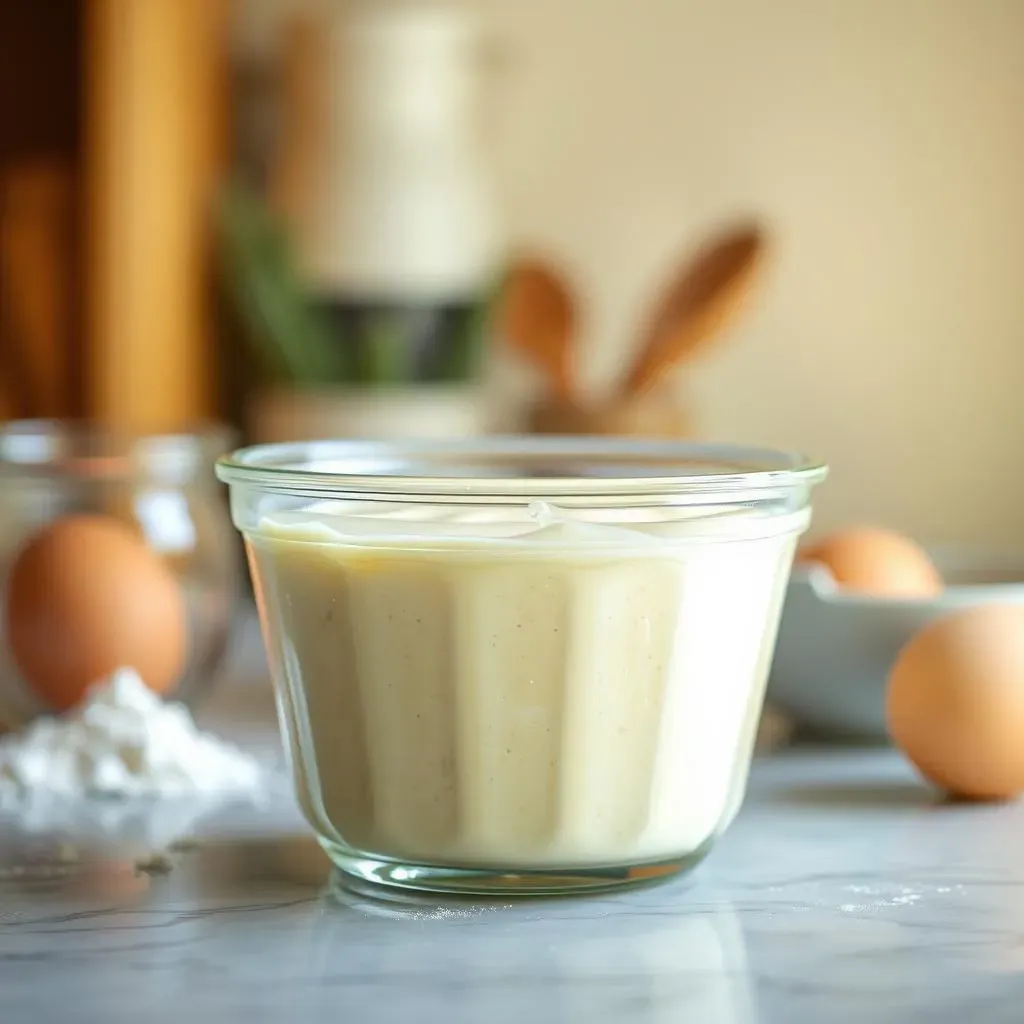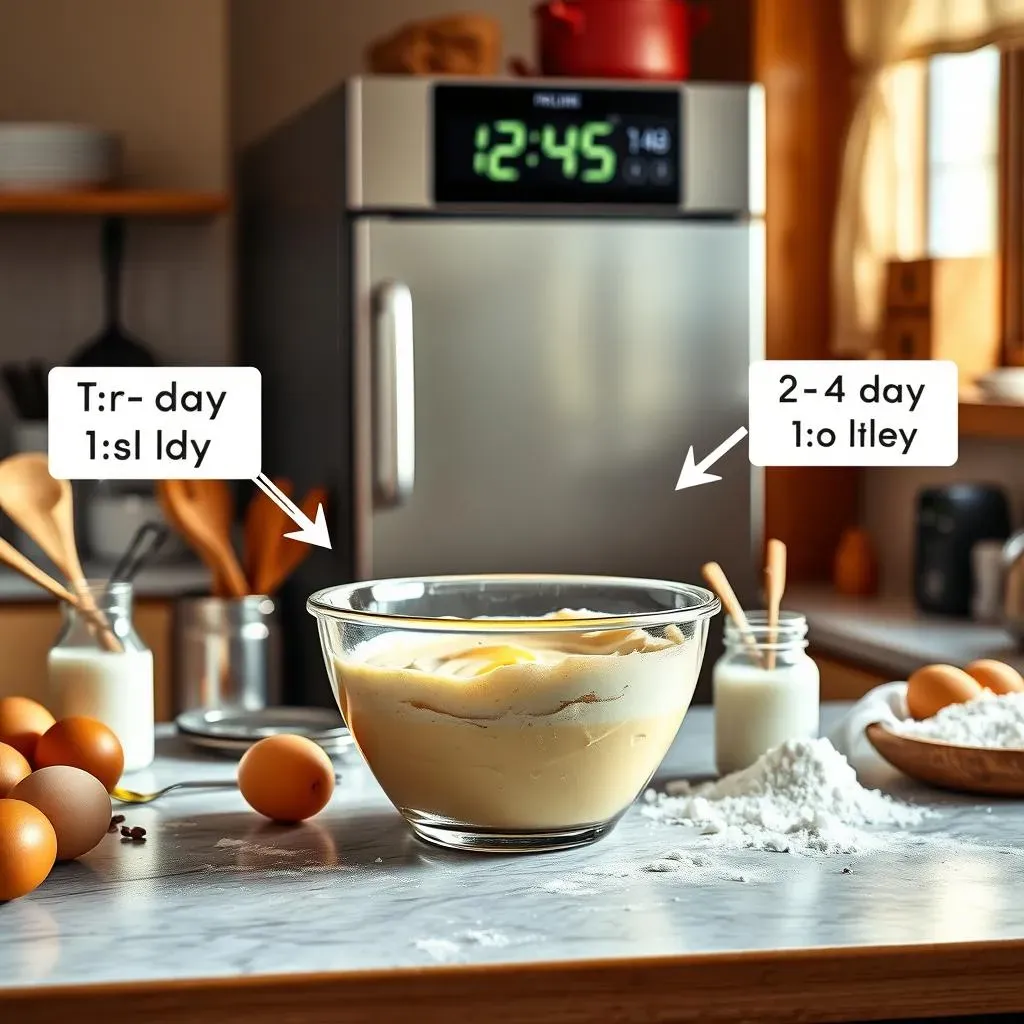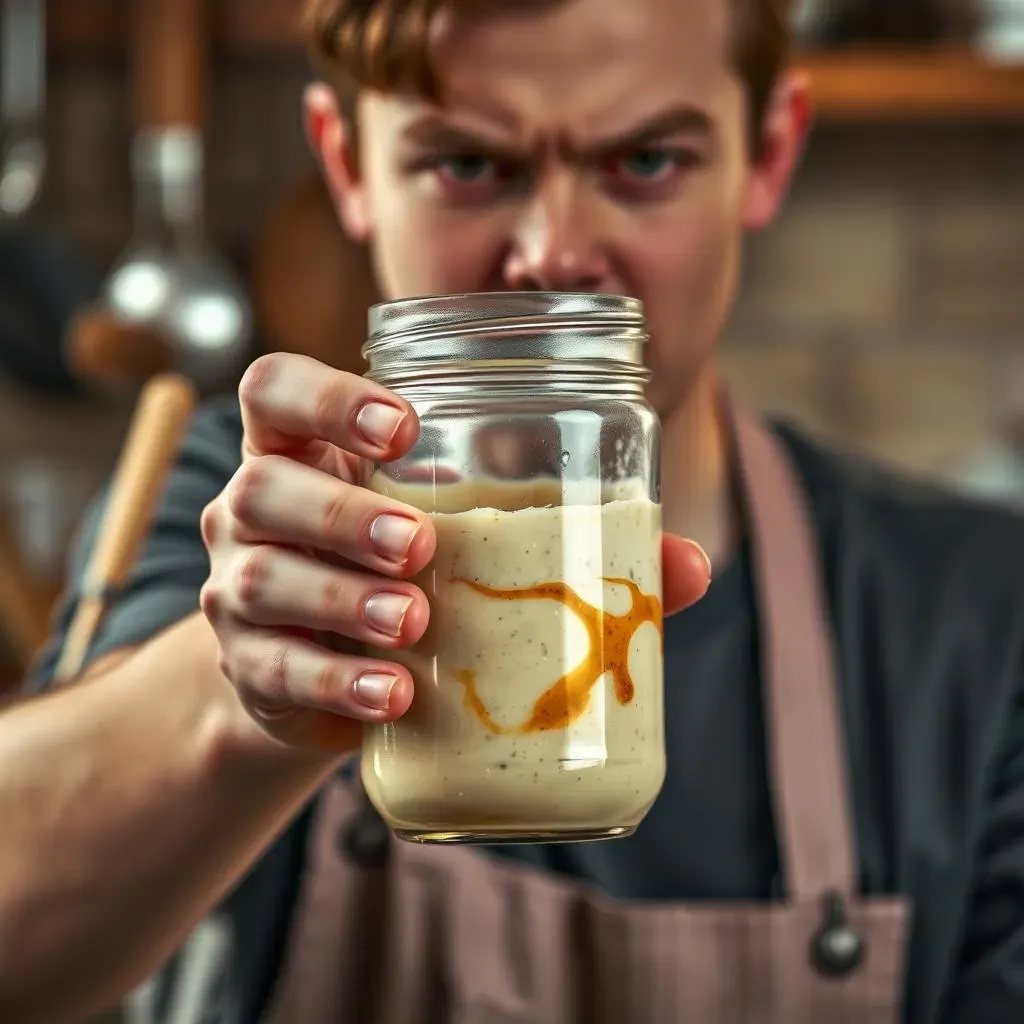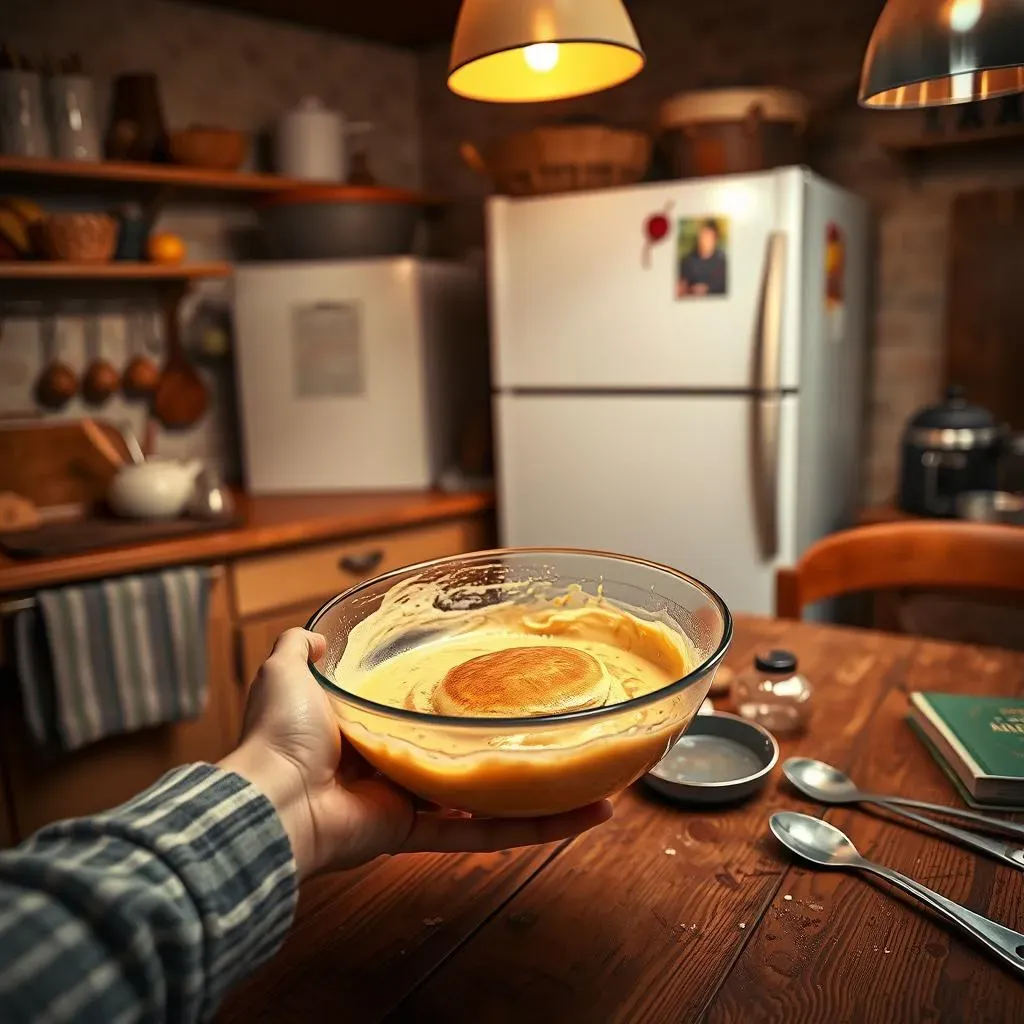Table of Contents
Ever find yourself staring at leftover pancake batter, wondering if it's destined for the trash? I've been there, a victim of my own ambitious weekend breakfast plans. The big question always pops up: "can pancake batter be refrigerated?" It's a common kitchen dilemma, and the answer isn't as straightforward as you might hope. We're not just talking about saving a bit of batter; we're talking about preserving the fluffy, golden potential of tomorrow's breakfast. This article will guide you through the ins and outs of refrigerating pancake batter, from how long it'll stay good to the telltale signs of spoilage, and some handy tips to make sure your pancakes are still perfect even after a fridge nap. We'll tackle the real concerns, like whether your baking powder will get angry, and how to keep your batter from tasting like last night's leftovers. So, let's get to it and turn those leftover batter worries into pancake perfection.
Can Pancake Batter Be Refrigerated? The Basics

Can Pancake Batter Be Refrigerated? The Basics
The Short Answer
let's get straight to it. The simple answer is, yes, you usually can refrigerate pancake batter. It's not like some delicate science experiment that will explode if it gets a little chilly. But, and this is a big but, there are some things you should keep in mind if you're planning on saving your batter for later. It's not just a free-for-all throw-it-in-the-fridge situation. Think of it like putting a pet to bed, it needs some care.
The main thing is to understand that pancake batter is a living, breathing mixture – okay, maybe not breathing, but it's definitely changing over time. The ingredients start reacting with each other as soon as they're combined. That's why your pancakes get all fluffy and delicious. Refrigeration slows that process down, which is great if you're not ready to cook them immediately. But, it doesn't stop it completely.
Why Refrigerate?
Why bother refrigerating at all? Well, sometimes you just make too much batter, or you want to prep ahead for a lazy weekend brunch. Maybe you're like me and have a hard time making just a small batch. Whatever the reason, knowing you can safely store it is a lifesaver. It means less waste and more potential for pancakes whenever the craving hits. It's about making your life easier and your mornings smoother.
But not all batters are created equal. Some will hold up better than others in the fridge. Things like the leavening agent (baking powder or baking soda) and the moisture content can make a difference. We’ll get into those details further down, but for now, just remember that refrigeration buys you time but it doesn’t stop the clock entirely.
Batter Component | Effect of Refrigeration |
|---|---|
Leavening Agents (Baking Powder/Soda) | Reaction slows, but doesn't stop |
Liquids (Milk, Buttermilk) | Can become slightly more acidic |
Flour | May absorb more liquid, changing consistency |
How Long Can Refrigerated Pancake Batter Last?

How Long Can Refrigerated Pancake Batter Last?
Alright, so you've got your batter chilling in the fridge. Now the big question: how long is it actually good for? It's not like milk that has a clear expiration date. The general rule of thumb is that pancake batter can last for about 2 to 4 days in the refrigerator. This is assuming you've stored it properly in an airtight container, not just some bowl with plastic wrap haphazardly thrown on top. Think of it like a race against time, the clock is ticking, and the batter is slowly losing its oomph.
That 2-4 day window isn't set in stone, though. It depends on a few factors. If you used fresh ingredients, especially eggs and milk, you'll have a bit more time. If your milk was already close to its expiration, your batter will have a shorter lifespan. Also, the type of batter matters. Buttermilk batters, for example, tend to become more acidic over time, which can affect the taste, so they might not hold up as well as a basic milk-based batter. It's a bit of a gamble, but with a little caution, you can usually make it through a couple of days.
I've personally pushed it to three days before and had pretty good results, but I also tend to be a bit of a risk-taker in the kitchen. I wouldn't recommend going much beyond that, though. You're not trying to create a science experiment in your fridge, just a tasty stack of pancakes. Think of it like this: would you eat a salad that's been sitting in your fridge for four days? Probably not. The same kind of logic applies to your pancake batter. It's always best to err on the side of caution and when in doubt, toss it out.
So, what's the takeaway? Refrigerated pancake batter is a great tool for meal prepping or saving leftovers, but it's not a forever solution. Keep that 2-4 day window in mind, and use your best judgment. Remember, nobody wants a pancake that tastes like fridge funk. And always, always make sure you give it a good sniff before you cook it, just to be safe. Your nose is often your best kitchen tool.
Storage Time | Batter Condition |
|---|---|
1-2 Days | Generally best quality, minimal changes |
2-3 Days | Still good, but might need a little whisking, subtle changes in flavor |
3-4 Days | Use with caution, quality may start declining, check for off smells |
Over 4 Days | Not recommended, high chance of spoilage |
Signs Your Refrigerated Pancake Batter Has Gone Bad

Signs Your Refrigerated Pancake Batter Has Gone Bad
The Sniff Test
let's talk about the not-so-glamorous side of things: how to tell if your pancake batter has turned on you. The most obvious sign is the smell. If your batter has taken on a sour or funky odor, it's a major red flag. Fresh batter should smell fairly neutral, maybe a little sweet, but definitely not like something that's been forgotten in the back of the fridge. Trust your nose on this one, it's your first line of defense against a pancake disaster. If it smells off, it probably is, and it's best to just toss it. Nobody wants to start their day with a pancake that tastes like old gym socks.
I once ignored a slightly funky smell because I was too lazy to make a new batch, and let me tell you, those pancakes were not a pleasant experience. They tasted like they'd been sitting next to a bag of onions. It was a lesson I won't soon forget, and now I'm a firm believer in the power of the sniff test. Don't be afraid to get up close and personal with your batter, it's better to be safe than sorry, or in this case, to have a bad batch of pancakes.
Visual Clues
Beyond the smell, there are some visual clues to look out for. If your batter has separated and no amount of whisking seems to bring it back together, that's not a good sign. You might see a watery layer on top or a thick, gloppy mess at the bottom. This separation indicates that the ingredients have started to break down, and the batter's consistency is compromised. Also, keep an eye out for any mold growth, though this is less common if you’ve stored it properly. If you see any fuzzy spots or weird colors, it's definitely time to say goodbye to that batter.
I've had a few instances where the batter looked okay at first glance, but upon closer inspection, it had a strange, almost bubbly texture. That’s a sign that the leavening agents are overreacting or that some unwelcome bacteria are starting to get to work. It’s like the batter is trying to tell you it's had enough. Don’t ignore these visual warnings. They're your batter's way of saying, “I’m not fit for pancake duty anymore.”
Sign | What to Look For | Action |
|---|---|---|
Smell | Sour, funky, or off odor | Discard immediately |
Separation | Watery layer, thick gloppy mess | Discard if whisking doesn't fix it |
Mold | Fuzzy spots, weird colors | Discard immediately |
Texture | Strange, bubbly, or unusual consistency | Discard if unusual |
Tips for the Best Refrigerated Pancake Batter

Tips for the Best Refrigerated Pancake Batter
Airtight is Key
so you're committed to saving that batter, let's make sure it stays as fresh as possible. The first and most important thing is storage. You absolutely need an airtight container. I'm not talking about a bowl with some plastic wrap clinging for dear life. Get yourself a good container with a tight-fitting lid. This prevents the batter from drying out, absorbing weird fridge odors, and keeps those pesky bacteria at bay. Think of it as giving your batter a little spa day, a secure, cozy space where it can rest without any outside interference. I've learned the hard way that flimsy plastic wrap is no match for a determined refrigerator, so invest in a good container, your future pancakes will thank you for it.
Also, don't fill the container right to the brim. Leave a little bit of space at the top. This is because the batter might expand slightly as it sits, and you don't want it overflowing when you open the lid. It's a small detail, but it can save you from a sticky mess. It's like packing a suitcase, leave a little room for souvenirs, or in this case, for the batter to breathe. And don't forget to label the container with the date you made the batter! It's easy to lose track of time in the fridge, and a simple label can save you from wondering if that batter is still good. Trust me, future you will appreciate the organization.
The Whisking Technique
When you're ready to use your refrigerated batter, don't just pour it straight onto the griddle. It's likely going to have separated a little, that's just part of the process. Give it a gentle whisk before you start cooking. I said gentle, not like you're trying to beat a rug! You just want to bring everything back together and make sure the consistency is smooth. Over-whisking can make your pancakes tough, so just a few quick turns with a whisk or fork is all you need. Think of it as a gentle wake-up call for the batter, a little nudge to get it ready to perform its pancake duties. It’s like waking up a sleepy friend, you want to be encouraging, not alarming.
And if your batter seems a bit thick after being in the fridge, don't be afraid to add a tablespoon or two of milk or water to thin it out. You want it to be pourable, not like cement. The consistency should be similar to thick cream. It’s like adjusting the volume on a speaker, you want it to be just right. Sometimes, a little extra liquid is all it takes to bring your batter back to its perfect form. It's all about adapting and adjusting to make sure you get the best pancakes possible. So, don't be afraid to tweak things a little, it's all part of the fun of cooking.
Tip | Why it Matters |
|---|---|
Airtight Container | Prevents drying, odors, and bacteria |
Leave Some Space | Avoids overflow, allows for expansion |
Gentle Whisking | Recombines ingredients, prevents toughness |
Adjust Consistency | Ensures proper pourability |
Wrapping Up: Fridge-Friendly Pancakes
So, can pancake batter be refrigerated? Absolutely, with a few caveats. It’s not a free-for-all, and you can't just shove it in there and hope for the best. Keep it airtight, use it within a few days, and always check for any funky smells or textures before you start cooking. Think of it like a delicate science experiment, where the reward is a stack of delicious pancakes, and the risk is a slightly disappointing breakfast. But armed with the knowledge you've gained here, you're now equipped to handle that leftover batter like a pro. Happy flipping, and may your pancakes always be fluffy and golden!